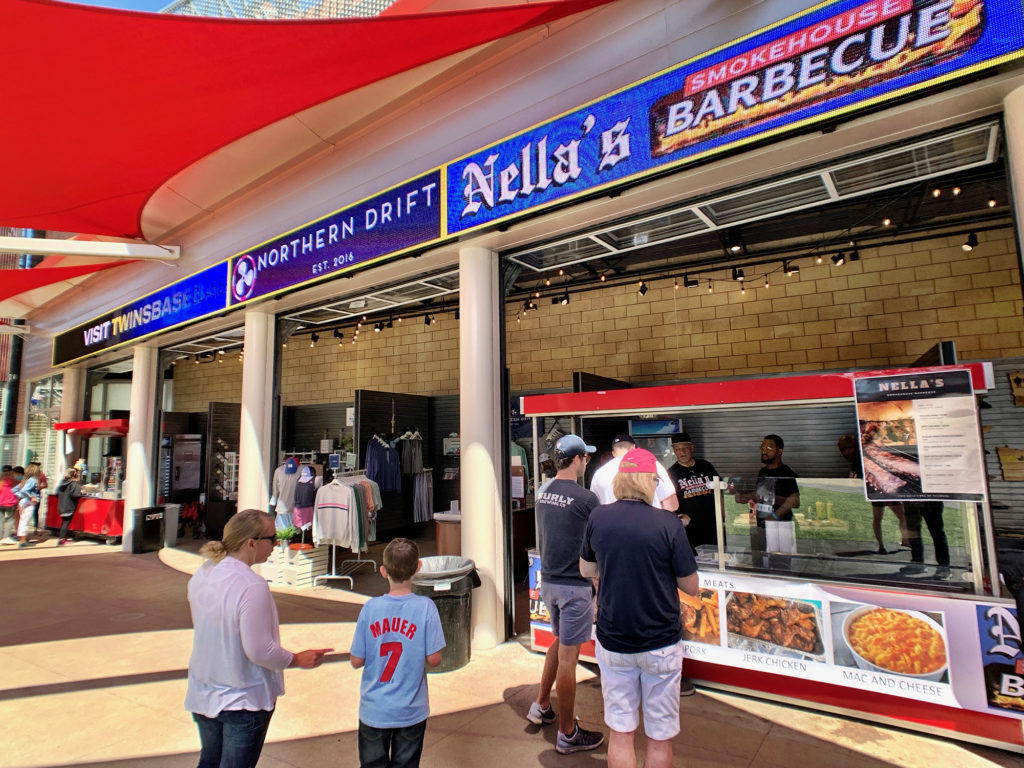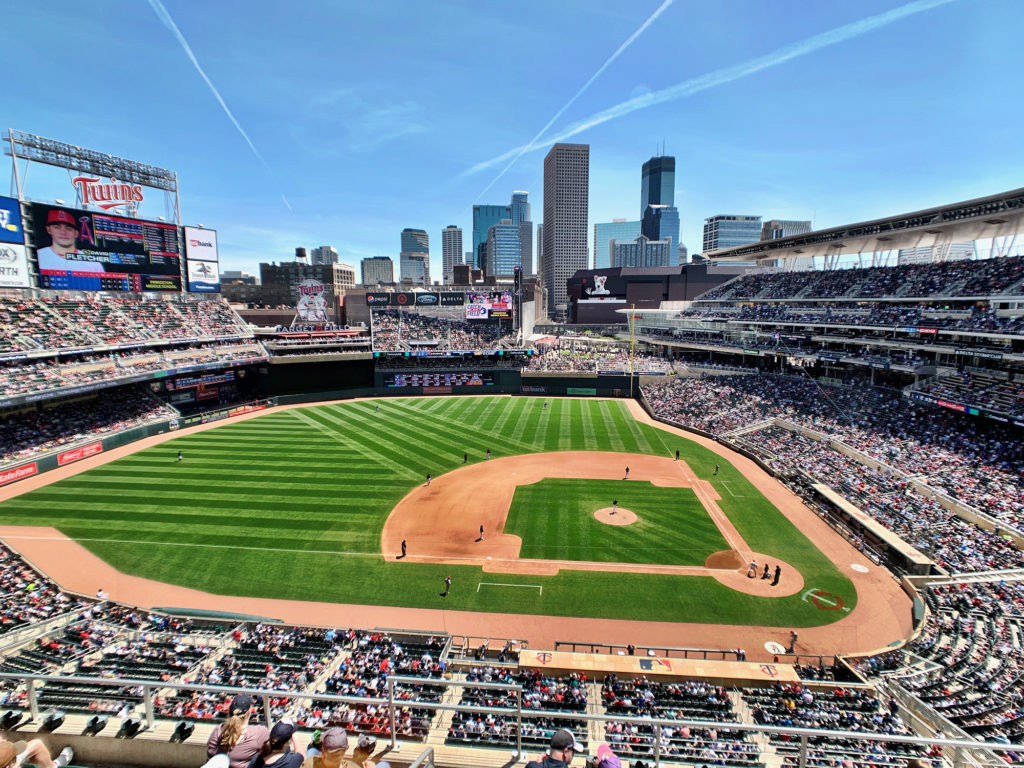What do you do when you want to add new features to a ballpark with an extremely limited footprint? You change the rules and extend the ballpark boundaries to encompass a nearby plaza, as the Minnesota Twins did this season at Target Field.
Target Field was wedged into one of the smallest footprints among Major League Baseball ballparks—just under nine acres. That means any changes to the ballpark has to take place in the existing footprint, as the team did last season with the renovation of the award-winning Bat & Barrel Club.
Unless, of course, you change the ballpark’s footprint—which the Twins did this offseason by extending Gate 34 closer to First Avenue and creating a new plaza. New security gates are now closer to the street, with the result being 9,500 square feet of “new” space added within the security perimeter. Which, if you’re a Twins fan, is a major addition of found space. Check it out here:
About half of that found space, some 5,100 square feet of turf, is designed for kids to burn off some energy during a game, as well as engage in some games, like cornhole, as shown above. Keeping the attention of fans is a 2,500-square-foot market designed as a pop-up space: vendors can set up shop and see plenty of support thanks to the new LED displays and shaded spots.
Meanwhile, we had the chance to wander Target Field on a gorgeous May day with the second-largest crowd of the season in the stands. With plenty of kids and families on hand, it showed the ballpark as a place for every kind of fan. We noted on social media at the time that Target Field certainly has aged well, which caused some detractors to argue that the Twins home isn’t that old. Don’t look now, but this is the tenth season of Twins baseball at Target Field: it opened in 2010 and was our Ballpark of the Year. At the 10-season mark ballparks can begin to show their age with definite wear and tear, but Target Field is in great shape and arguably a much better venue than when it opened. The Twins have spent money both on ballpark upgrades (some large, many small) and annual maintenance, addressing problem areas over the years. Take, for example, the right-field corner, sporting two of the major entrances to the ballpark. For many years this corner was a major chokepoint on the 360-degree concourse, but over time the Twins removed impediments while adding a craft-beer stand and more.
This article first appeared in the Ballpark Digest newsletter. Are you a subscriber? It’s free, and you’ll see features like this before they appear on the Web. Go here to subscribe to the Ballpark Digest newsletter.






